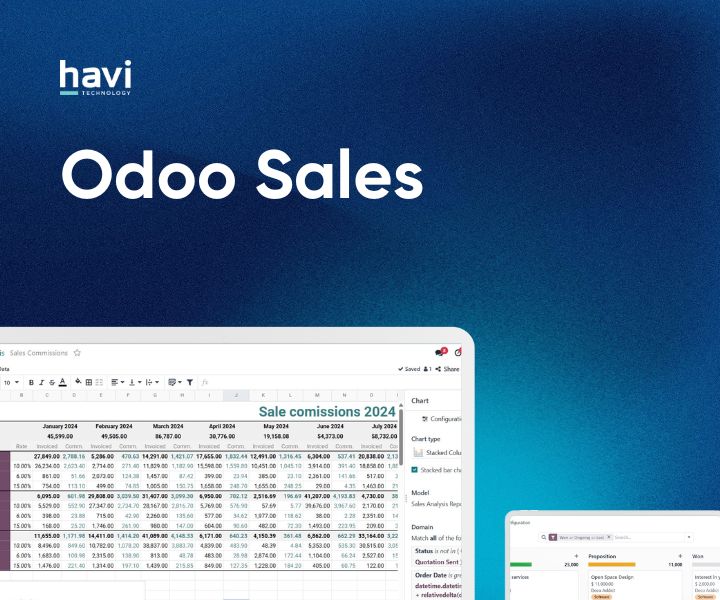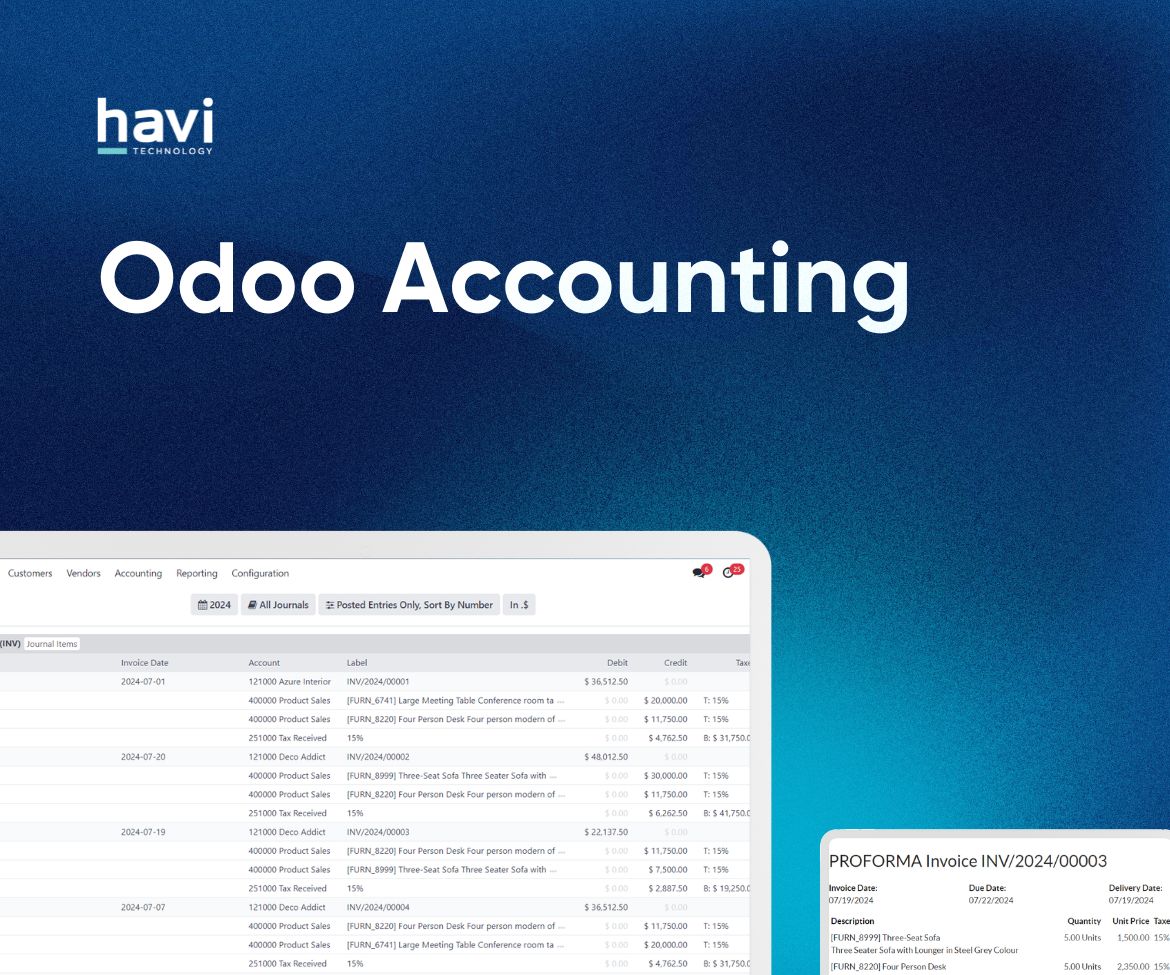TABLE OF CONTENTS
- 1. Website and Customer Experience
- 1.1. Website & eCommerce: Guided Onboarding, New Templates, Google Merchant Sync
- 1.2 Live Chat and Discuss: Expertise Routing, Chat Insights, Status Controls
- 2. Sales, CRM and Subscriptions
- 2.1 Sales: Editable Optional Products, Catalogue Sections, Portal Top-Up
- 2.2. CRM and Marketing: AI Probability, Lead Sources, Kanban Linking
- 2.3. Subscriptions: Prorated Billing, One-Time Sales, Portal Edits
- 3. Inventory, Purchase and Barcode
- 3.1. Inventory and Purchase: Packages within Packages, Forecasted Reports, Suggested Quantity to Replenish
- 3.2. Barcode: Operation Descriptions, Product Source Location, Lot and Serial Number Properties
- 4. Manufacturing, Shop Floor & Planning
- 4.1. MRP: Gantt View, Editable Deadlines, Labour-Based Valuation
- 4.2. Shop Floor & Planning: Barcode Workflows, Shift Scheduling, Routing Edits
- 5. Project, Timesheets and Services
- 5.1. Project and Timesheet: Smart Assign, Mobile Grid View, Priority Alerts
- 5.2. Field Service and Appointments: Calendar View, Technician Tracking, Mass Planning
- 6. HR, Payroll and Expenses
- 6.1. Payroll: Redesigned Engine, Payslip Correction, Unified Master Report
- 6.2. Time Off and Expenses: Odoo Master Cards, Multi-Expense Submission, Complex Duration
- 7. Accounting, Compliance and ESG
- 7.1. Accounting: Peppol Invoicing, Bank Sync, BAS Reports
- 7.2. ESG App: Scope 1–3 Emissions, CSRD Reporting, Auto Category Mapping
- 8. AI, Documents and Sign
- 8.1. AI App: Prompt Commands, Auto Field Completion, Voice and Web Search
- 8.2. Sign and Documents: Bulk Signing, Chatter Integration, Access Controls
- Odoo 19: What’s Coming For Australia?
- 1. Fully compliant Payroll AU with STP Phase 2 and SuperStream
- 2. ABA file payments, Direct Debit for wages/super
- 3. Multi-stream YTD import, backpay, and validations
- 4. 2025–26 tax rules, STSL changes, ATO security
- 5. Peppol invoicing, GST toggle, fringe benefits, BAS automation
- 6. Tyro integration
- 7. Roadmap: SBR BAS lodging, Open Banking, PEL Access, Fiduciary Program
- Odoo 19’s FAQs For Australian Teams
- 1. How should Australian businesses prepare?
- 2. How is Odoo 19 different from Odoo 18 in Australia?
- 3. How can AI in Odoo 19 be tailored for real business outcomes?
- 4. How can I try Odoo 19 or upgrade from my current version?





Odoo Purchase is a procurement management module within the Odoo ERP suite, built to streamline the full purchasing lifecycle - from supplier requisition to invoice validation and payment. It integrates seamlessly with inventory, accounting, and sales modules, allowing businesses to automate purchase orders, monitor vendor performance, and maintain end-to-end financial control in one unified system.
In the context of the Australian market, Odoo Purchase is particularly relevant. With built-in support for GST, BAS, and e-invoicing standards, it enables compliance from the ground up. Its ability to handle supplier-specific lead times, multi-currency orders, and integrations with Australia Post, StarTrack, and major banks makes it suitable for local businesses across the country.
This blog unpacks the key features of Odoo Purchase, breaks down its pricing model for Australian SMEs, explains how it integrates with local systems, and provides an Australian-led case study to illustrate its real-world impact.
What Are Odoo Purchase Key Features?
Odoo Purchase offers a comprehensive suite of procurement features designed to automate purchasing workflows, enhance vendor collaboration, maintain cost control, and ensure compliance across operations. From automatic requisitions to financial integration and predictive reporting, Odoo Purchase equips Australian businesses with the tools necessary for scalable, transparent, and strategic procurement management.
1. Automated Requests for Quotation (RFQs) and Purchase Orders
Odoo Purchase automates the end-to-end process of creating requisitions and purchase orders based on real-time stock levels, sales activity, and procurement rules, eliminating manual intervention and delays.
The image illustrates the RFQ dashboard, including how Requests for Quotation and Purchase Orders are tracked and managed within the system.
Beyond automating transactional tasks, Odoo Purchase provides advanced tools to manage supplier relationships over longer cycles, supporting stability and cost predictability in growing supply chains.
2. Blanket orders & long-term agreements
Odoo Purchase enables businesses to negotiate and manage blanket orders with preferred suppliers, ensuring price stability, consistent supply, and streamlined reordering processes over a fixed period.
The following screenshot shows how to create a new blanket order by enabling the Purchase Agreements feature in the Purchase app settings:
While securing long-term supplier agreements is critical, businesses also need structured vendor evaluation and tendering processes to continuously optimise sourcing strategies.
3. Vendor management & purchase tenders
Odoo Purchase empowers businesses to run structured vendor management programs by initiating tenders, evaluating supplier offers, and monitoring vendor performance to optimise sourcing decisions.
The image below illustrates creating a vendor costs report in spreadsheet view and the capability to switch between different graph views for analysis:
Selecting the right suppliers is just the first step; maintaining financial integrity requires systems that cross-check procurement, deliveries, and invoices for full accountability.
4. Three-way matching & vendor bill control
Odoo Purchase strengthens procurement integrity by implementing a three-way matching system that verifies purchase orders, goods receipts, and vendor bills before any payment is approved.
The screenshot shows how the "Should be paid" line on a vendor bill helps users determine whether the bill should be paid:
Once financial controls are established, synchronising procurement with broader accounting and operational structures becomes essential for scaling across multiple business entities.
5. Invoicing, accounting, and multi-company operations
Odoo Purchase seamlessly synchronises procurement activities with accounting records and supports multi-company environments, ensuring accurate financial tracking across operational entities.
The image illustrates the knowledge of how to override a product’s control policy directly from the product form in the Purchase tab:
With a strong operational and financial backbone, businesses can better manage diverse product ranges, variants, and supplier-specific conditions critical to procurement accuracy.
6. Product & variant management
Odoo Purchase simplifies the management of diverse product portfolios by supporting detailed variant configurations, supplier-specific references, and multiple procurement conditions.
The next image explains how to configure products for reordering by adjusting key settings in the product form:
Finally, leveraging real-time dashboards and predictive analytics allows procurement teams to move from reactive ordering to proactive supply chain management.
7. Dashboards, reporting & forecasting
Odoo Purchase provides businesses with real-time dashboards, forecasting tools, and collaborative reporting functions to make smarter procurement decisions and anticipate stock demands.
The image demonstrates how users can generate a procurement expenses report and insert it into the Documents app’s spreadsheet:
With these features, Odoo Purchase not only automates routine procurement tasks but also builds a foundation for strategic supplier management and financial accuracy. As businesses scale, understanding how pricing structures align with procurement growth becomes critical to ensure cost efficiency.
In the next section, we explore the Odoo Purchase pricing model for Australian businesses.
What Is Odoo Purchase Pricing For The Australian Market?
Odoo Purchase offers flexible pricing options for Australian businesses, ranging from a free Community Edition for basic needs to a scalable, modular Enterprise Edition designed for advanced procurement operations.
The total cost is influenced not only by licensing but also by factors such as implementation, hosting, support, and system customisation. Understanding both the base pricing and the full ownership costs is essential to accurately forecasting your investment in Odoo Purchase.
1. How much is Odoo Purchase?
The cost of Odoo Purchase depends on whether businesses choose the Community Edition or the Enterprise Edition, each offering different levels of functionality and pricing structures.
Odoo Purchase In The Community Edition
Odoo Purchase in the Community Edition is available at no cost and provides businesses with essential procurement tools such as basic supplier management, purchase order creation, and inventory tracking.
The image highlights Odoo Purchase’s capabilities are provided in the Odoo Community Edition:
This option suits startups and small businesses with basic procurement needs. However, it lacks critical capabilities such as regular updates, official Odoo support, external API access, and custom development options — all of which are essential for growing or scaling operations.
Odoo Purchase In The Enterprise Edition
Odoo Purchase is available under three pricing plans within the Enterprise Edition: the One-App Free Plan, the Standard Plan, and the Custom Plan. Under the One-App Free Plan, businesses can use Odoo Purchase independently at no cost, as long as no additional paid modules are added. Once modules like Inventory, Accounting, or Sales are included, pricing shifts to a modular, user-based model.
The following image provides an overview of the current Odoo Enterprise pricing tiers available in Australia:
Actual costs depend on your number of users, hosting preferences, and operational scale. For the most accurate pricing in AUD, we recommend booking a personalised consultation with our specialists at Havi Technology.
2. What factors influence the total cost of ownership?
When evaluating Odoo Purchase, businesses should consider four key components that significantly impact the total cost of ownership (TCO). See the image below for an overview of the four factors:
License Costs
Odoo’s licensing costs are influenced by the number of users, the country of operation, and the selected plan, whether single-app access or full suite deployment. Careful licensing planning ensures operational scalability without unexpected cost increases as your business grows.
Implementation and Customisation
Implementation and customisation costs arise from system setup, module integration, data migration, and workflow tailoring to fit specific operational needs. Costs vary depending on project scope, complexity, and training requirements. Partnering with an experienced implementation provider mitigates risks and ensures a smoother, faster deployment.
Hosting Infrastructure
Odoo offers three hosting options: Online, Odoo.sh, and On-Premises, each with different cost implications for storage, security, control, and maintenance. Businesses should align their hosting choice with technical needs, budget, and regulatory requirements to balance flexibility with operational cost efficiency.
Support and Upgrade Services
Ongoing support and upgrade services are crucial for maintaining system performance, accessing new features, and securing your investment over time. Costs vary depending on support tiers and upgrade complexity. A robust support plan minimises operational disruptions and ensures future-proof scalability.
Understanding the pricing and total cost of ownership is crucial, but it’s only part of the equation. To maximise the value of Odoo Purchase, seamless integration with critical business systems like accounting, inventory, and compliance is essential. In the next section, we explore how Odoo Purchase integrates with Australian business environments to deliver full operational cohesion.
Seamless Integration With Australian Business Systems
Odoo Purchase is built to integrate seamlessly with core business systems, ensuring Australian companies can manage procurement, compliance, logistics, and financial operations within a unified environment. By combining system automation with local compliance and ecosystem connectivity, businesses achieve faster, error-free procurement cycles.
1. Integrating Odoo Purchase with Accounting, Inventory & Sales
Odoo Purchase seamlessly connects procurement operations with accounting, inventory management, and sales order processing to create a unified, automated business workflow.
Through this integration, businesses eliminate data duplication, accelerate procurement cycles, and gain operational accuracy across departments.
2. Australian Localisation: GST, BAS, E-Invoicing, & Compliance Integrations
Odoo Purchase is fully localised for Australian compliance, embedding tax, reporting, and invoicing standards directly into procurement workflows to protect businesses from regulatory risks.
These localisation features ensure Australian businesses stay compliant while optimising their procurement and financial reporting processes.
3. Connecting with Local Shipping Couriers, Suppliers, and Banks
Odoo Purchase enables Australian businesses to extend procurement operations into shipping, supplier management, and banking ecosystems through powerful, flexible integrations.
These integrations enable businesses to build agile, responsive, and transparent procurement networks across the Australian supply chain.
By creating a tightly connected procurement, compliance, and logistics ecosystem, Odoo Purchase positions Australian businesses for faster, smarter, and more secure operations. To see these advantages in practice, the next section explores how STEDI, a Melbourne-based manufacturer, transformed its procurement and fulfilment processes using Odoo Purchase.
A Case Study of Odoo Purchase: How STEDI Streamlined Procurement in Australia
STEDI, a leading manufacturer of high-performance LED automotive lighting, operates from its fulfilment headquarters in Melbourne, maintaining full control over its supply chain and distribution. As demand grew locally and internationally, STEDI faced increasing pressure to modernise its procurement processes to keep pace with customer expectations and shipment volumes.
Like many fast-scaling Australian manufacturers, STEDI struggled with fragmented systems and manual purchasing workflows. Managing thousands of consignments each week highlighted critical inefficiencies in purchase order accuracy, inventory restocking, and supplier coordination.
With Havi Technology’s support, STEDI implemented Odoo Purchase, integrated with Inventory, Accounting, and Sales. Leveraging Inventory Planner alongside Odoo, real-time stock levels now drive automated purchasing forecasts and purchase order creation, eliminating both overstocking and stockouts. This automation has been pivotal for maintaining agility in a high-volume, fast-turnover distribution model.
Key features such as supplier lead time tracking, supplier reference management, and automated reordering based on inventory thresholds have given STEDI complete procurement visibility. Coupled with accounting integration, the system eliminated duplicate data entry, reduced payment discrepancies, and strengthened financial oversight.
STEDI’s success story highlights how Odoo Purchase can fundamentally transform procurement efficiency, supplier management, and financial control for Australian businesses. To assess whether Odoo Purchase is the right fit for your business, the next section examines its comparative advantages, unique benefits, and recommended app combinations.
Is Odoo Purchase For Australian Businesses?
Yes - Odoo Purchase is a highly suitable solution for Australian businesses seeking to modernise procurement operations, ensure compliance, and achieve full supply chain visibility.
Its localised features, real-time integration across functions, and modular flexibility address the key operational challenges Australian SMEs face today. Businesses operating under GST frameworks, BAS reporting obligations, and growing logistics complexities can leverage Odoo Purchase to improve accuracy, automate procurement tasks, and streamline supplier management.
In the following sections, we break down why Odoo Purchase stands apart, its specific benefits for Australian businesses, and how to build the strongest procurement ecosystem using Odoo apps.
1. What sets Odoo Purchase apart for Australian SMEs?
Odoo Purchase differentiates itself by offering a modular, automation-driven procurement platform tailored to Australian SME needs without the heavy complexity of traditional enterprise ERP systems.
SMEs aiming to strengthen inventory control alongside procurement workflows, pricing visibility, and operational forecasting will benefit from integrating Odoo Inventory Management: Module Features, Pricing and User Reviews.
2. What are the benefits for Australian businesses?
Australian businesses benefit from Odoo Purchase through streamlined multi-currency procurement, built-in support for complex tax requirements, and improved coordination across decentralised supplier networks.
Additionally, maintaining compliance is simplified with Odoo Accounting Localisation, which introduces new tools specifically designed for GST, BAS automation, and PEPPOL e-invoicing compatibility.
3. Which Odoo apps should Australian businesses combine with Purchase first?
To maximise operational value, Australian businesses should integrate Odoo Purchase with complementary Odoo applications that complete the procurement-to-payment cycle.
For manufacturing-centric businesses, combining Odoo Purchase with Odoo Manufacturing enables seamless material planning and production scheduling. This ensures that procurement workflows are aligned with manufacturing demand forecasts, module flexibility, and pricing models fit for Australian manufacturers.
In conclusion, Odoo Purchase equips Australian businesses with a modular, compliant, and automation-driven procurement solution. The module covers everything from requisitions and vendor management to financial integration and real-time reporting.
If you’re ready to streamline your procurement operations with a system designed for the Australian market, contact Havi Technology for a personalised consultation today.